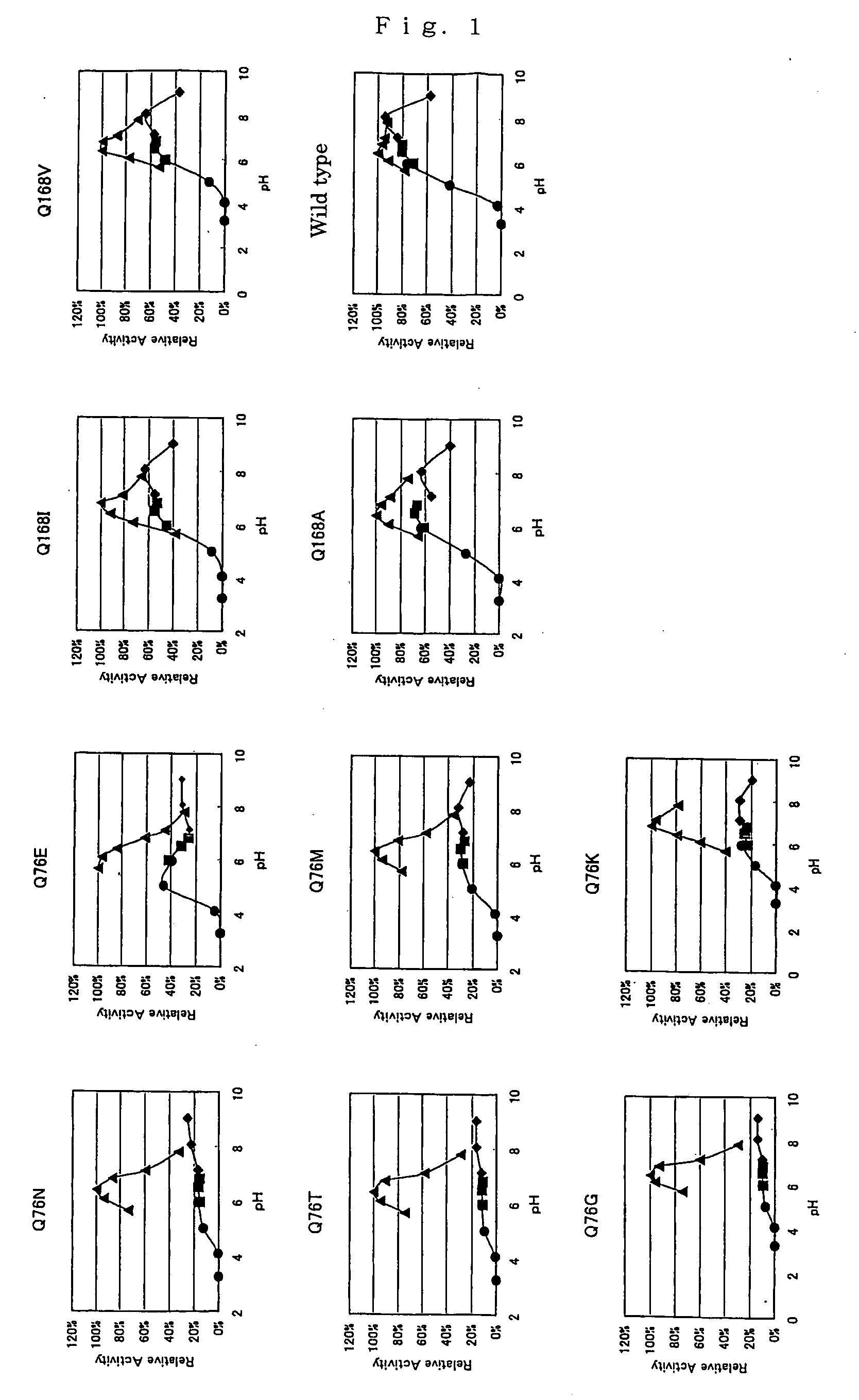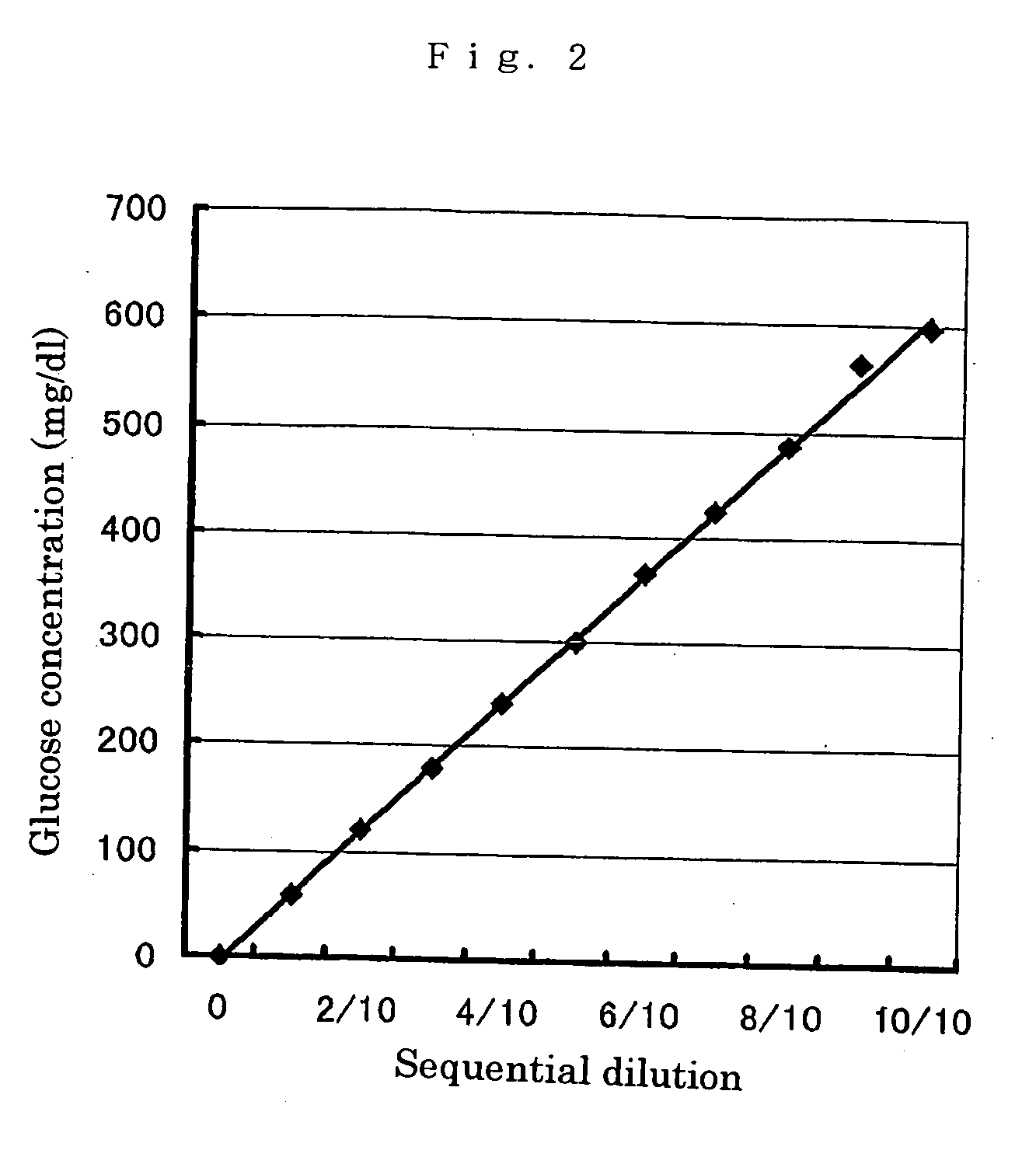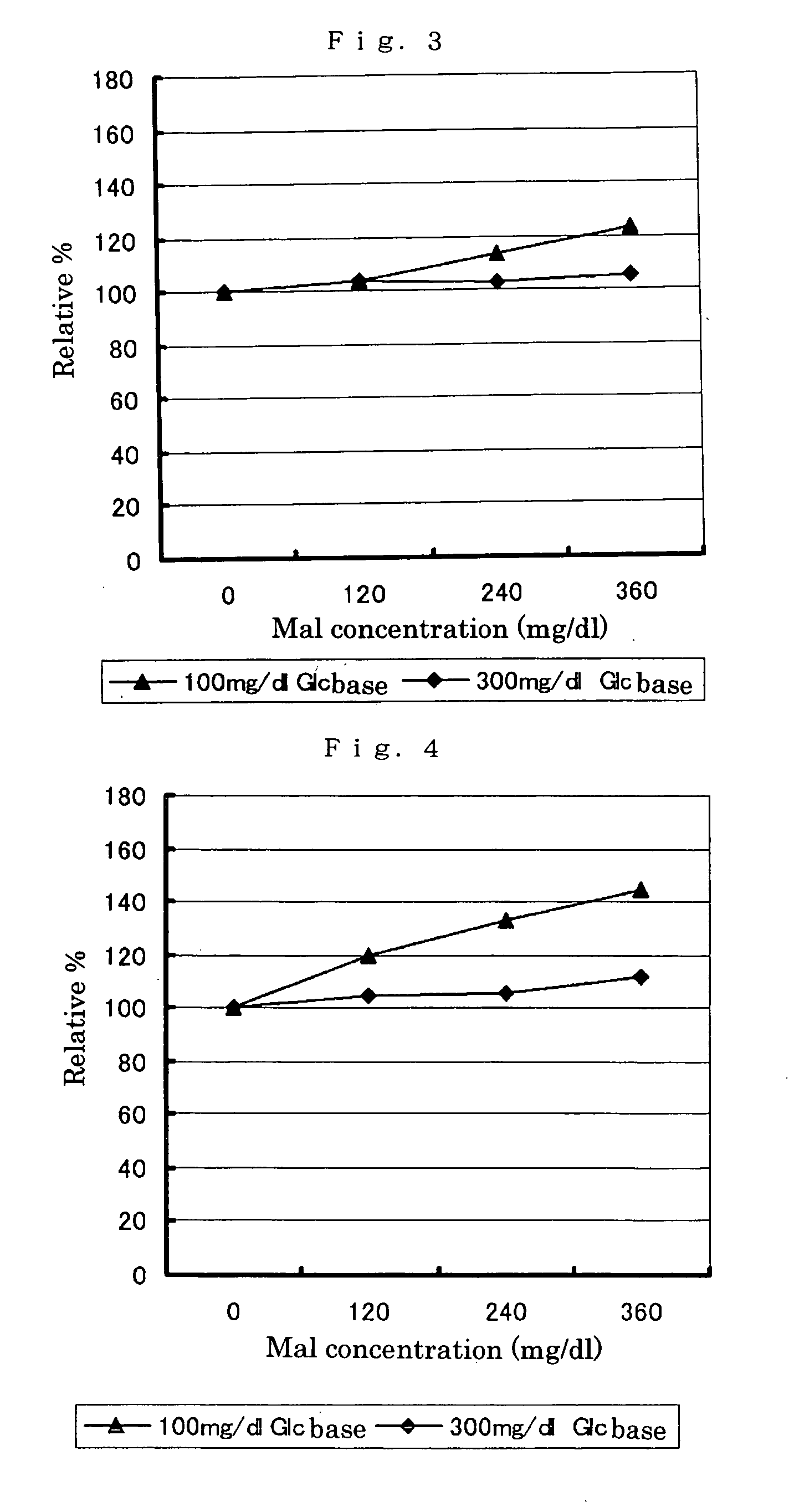Modified pyrroloquinoline quinone (pqq) dependent glucose dehydrogenase excellent in substrate specificity
- Summary
- Abstract
- Description
- Claims
- Application Information
AI Technical Summary
Benefits of technology
Problems solved by technology
Method used
Image
Examples
example 1
Construction of Expression Plasmid of Pyrroloquinoline Quinone Dependent Glucose Dehydrogenase Gene
[0175] An expression plasmid pNPG5 of the wild type PQQ dependent glucose dehydrogenase was obtained by inserting a structural gene encoding PQQ dependent glucose dehydrogenase derived from Acinetobacter baumannii NCIMB11517 strain into a multicloning site of a vector pBluescript SK(−). A base sequence thereof and an amino acid sequence of PQQ dependent glucose dehydrogenase deduced from the base sequence are shown in SEQ ID NOS:2 and 1, respectively.
example 2
Preparation of Mutant PQQ Dependent Glucose Dehydrogenase
[0176] A recombinant plasmid (pNPG5M1) encoding the mutant PQQ dependent glucose dehydrogenase in which glutamine at position 76 had been substituted with asparagine in the amino acid sequence described in SEQ ID NO:1 was acquired based on the recombinant plasmid pNPG5 comprising the wild type PQQ dependent glucose dehydrogenase gene, a synthetic oligonucleotide described in SEQ ID NO:3 and a synthetic oligonucleotide complementary thereto using Quick Change ™ Site-Directed Mutagenesis Kit (supplied from Stratagene) by performing mutagenesis according to its protocol and further determining the base sequence.
[0177] A recombinant plasmid (pNPG5M2) encoding the mutant PQQ dependent glucose dehydrogenase in which glutamine at position 76 had been substituted with glutamic acid in the amino acid sequence described in SEQ ID NO:1 was acquired based on pNPG5, a synthetic oligonucleotide described in SEQ ID NO:4 and a synthetic oli...
example 3
Construction of Expression Vector Replicable in Bacteria Belonging to Genus Pseudomonas
[0194] A structural gene portion of the mutant PQQ dependent glucose dehydrogenase was isolated by cleaving 5 μg of recombinant plasmid pNPG5M1 DNA obtained in Example 2 with restriction enzymes BamHI and XHoI (supplied from Toyobo). The isolated DNA and pTM33 (1 μg) cleaved with BamHI and XHoI were reacted with 1 unit of T4 DNA ligase at 16° C. for 16 hours to ligate the DNA. Escherichia coli DH5α competent cells were transformed with the ligated DNA. The resulting expression plasmid was designated as pNPG6M1.
[0195] For each recombinant plasmid of pNPG5, pNPG5M2, pNPG5M3, pNPG5M4, pNPG5M5, pNPG5M6, pNPG5M7, pNPG5M8, pNPG5M9, pNPG5M10, pNPG5M11, pNPG5M12, pNPG5M13, pNPG5M14, pNPG5M15, pNPG5M16 and pNPG5M17, the expression plasmid was acquired by the same way as in the above method. The resulting expression plasmids were designated as pNPG6, pNPG6M2, pNPG6M3, pNPG6M4, pNPG6M5, pNPG6M6, pNPG6M7, p...
PUM
| Property | Measurement | Unit |
|---|---|---|
| Stability | aaaaa | aaaaa |
Abstract
Description
Claims
Application Information
 Login to View More
Login to View More - R&D
- Intellectual Property
- Life Sciences
- Materials
- Tech Scout
- Unparalleled Data Quality
- Higher Quality Content
- 60% Fewer Hallucinations
Browse by: Latest US Patents, China's latest patents, Technical Efficacy Thesaurus, Application Domain, Technology Topic, Popular Technical Reports.
© 2025 PatSnap. All rights reserved.Legal|Privacy policy|Modern Slavery Act Transparency Statement|Sitemap|About US| Contact US: help@patsnap.com



